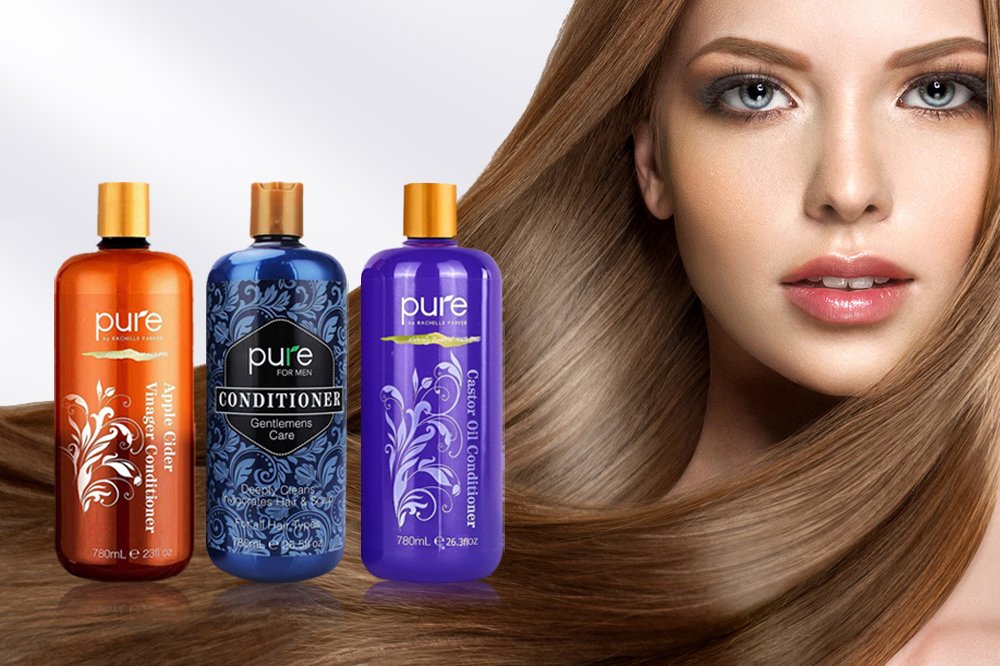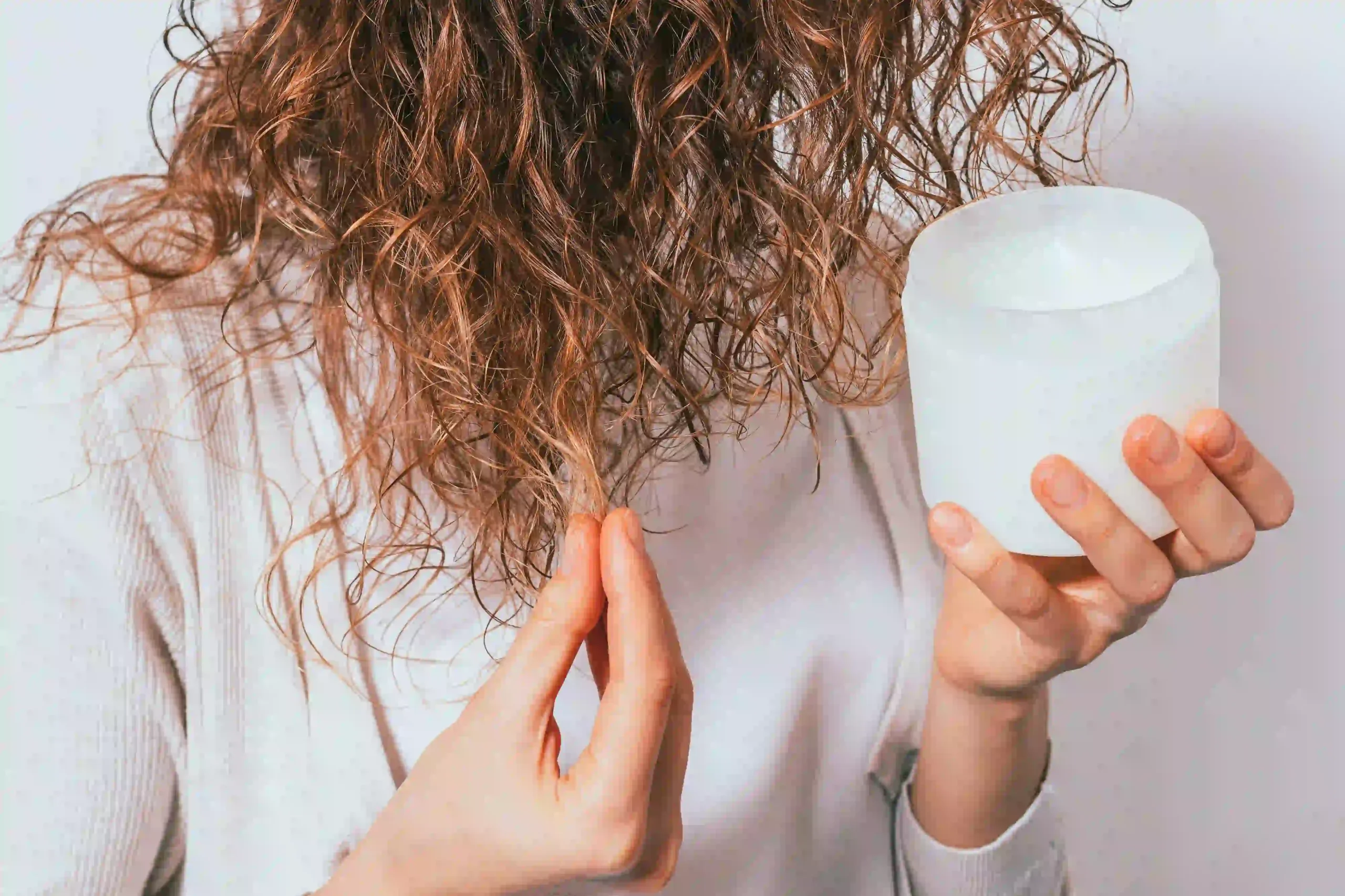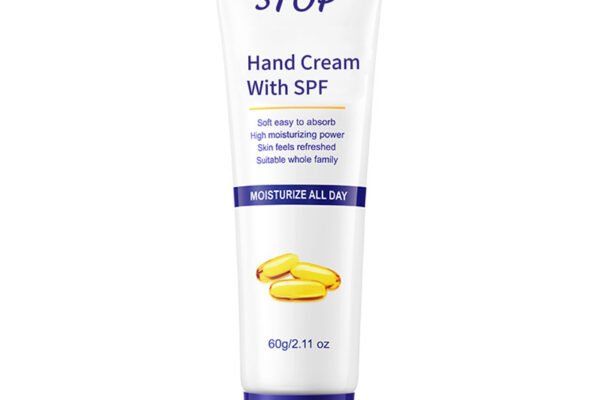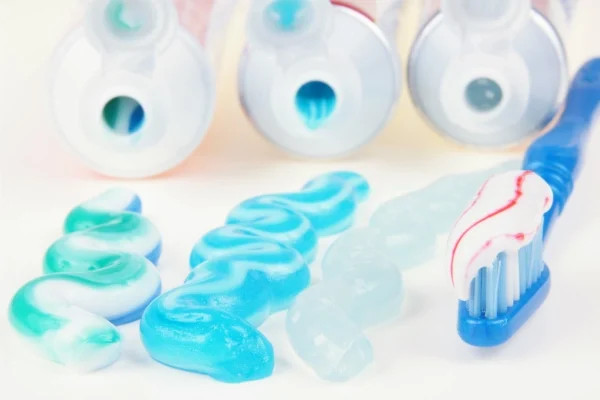Introduzione
Sommario
I capelli crespi o poco sani possono essere molto frustranti, soprattutto quando si aggrovigliano facilmente. Per fortuna, tutto ciò di cui hai bisogno per idratarli e proteggerli è un balsamo senza risciacquo. Sapere come applicarlo balsamo senza risciacquo Usarlo correttamente ti salverà da tutti i nodi e dalle ciocche secche che scricchiolano sotto la spazzola. Un uso sbagliato può essere controproducente, lasciando i capelli unti e appesantiti.
Prima di fare una scelta, devi sapere quando e con quale frequenza usare il balsamo senza risciacquo. Userai il prodotto per idratare e ammorbidire i capelli? Intendi usare un mix di prodotti o solo il balsamo senza risciacquo come prodotto a sé stante per la cura dei capelli? Quali sono le tue attuali sfide per i capelli? Hai bisogno di un balsamo con proprietà termoprotettive? (Questo è particolarmente importante se prevedi di usare strumenti a caldo sui capelli.) Questa guida è tutto ciò che ti serve per migliorare la tua routine per sempre.

Cos'è il balsamo senza risciacquo?
Il balsamo senza risciacquo è semplicemente un balsamo che non si risciacqua. Un balsamo è un prodotto per la cura dei capelli che svolge una di queste tre funzioni principali: idratare, ammorbidire e rendere i capelli più facili da gestire.

Durante lo shampoo si perde molta idratazione, motivo per cui i capelli si aggrovigliano e diventano difficili da pettinare subito dopo l'uso. Un balsamo aiuta a ridurre questo attrito, idratando i capelli e prevenendone la rottura.
Se i tuoi capelli tendono a seccarsi facilmente, probabilmente la situazione peggiora dopo aver finito lo shampoo. Il balsamo diventa il tuo migliore amico perché combatte rapidamente la secchezza e ammorbidisce la fibra capillare.
I tuoi capelli sono nella fase più problematica se non riesci quasi a passarci il pettine. Usare un balsamo ben formulato rende pettinare, modellare e gestire i capelli un gioco da ragazzi.
I prodotti e i balsami senza risciacquo per capelli sono disponibili in varie forme, tra cui spray, creme, gel, oli e sieri. Possono essere spray districanti, gel idratanti e anti-crespo, o creme termoprotettive. Le diverse forme di prodotto offrono anche diversi benefici. Ad esempio, è possibile utilizzare un balsamo senza risciacquo, una lacca o un gel per modellare i capelli e al contempo idratarli, e poi applicare una crema balsamo senza risciacquo per ammorbidirli e mantenerli lisci e setosi.
La differenza tra balsamo senza risciacquo e balsamo normale
La netta differenza tra un balsamo leave-in e un balsamo normale è che il primo si risciacqua, ma non il secondo. I balsami normali contengono quantità maggiori di ingredienti condizionanti, che formano uno strato protettivo sui capelli, che va risciacquato dopo un po' di tempo. I balsami leave-in contengono invece quantità minori di ingredienti benefici per i capelli, motivo per cui possono essere lasciati in posa più a lungo.
La minore concentrazione di ingredienti in un balsamo leave-in lo rende più leggero, fluido e più efficace nell'idratazione a lungo termine dei capelli. È anche il prodotto perfetto da usare se si desidera districare o proteggere i capelli prima dello styling. È possibile utilizzare un balsamo leave-in su capelli asciutti o umidi, a seconda dell'obiettivo finale.
I balsami tradizionali sono più densi e idratano subito dopo lo shampoo. Sono più efficaci nel ridurre l'effetto crespo e le doppie punte e rappresentano un approccio più a breve termine alla cura dei capelli.
Quale dovresti usare tra un balsamo senza risciacquo e un balsamo normale? Beh, puoi usare entrambi dopo aver lavato i capelli. Tuttavia, se al momento non hai intenzione di lavare o acconciare i capelli, dovresti optare per un balsamo senza risciacquo. Subito dopo lo shampoo, però, applica un balsamo normale e risciacqualo dopo il tempo indicato, oppure passa direttamente a un balsamo senza risciacquo. Indipendentemente dal prodotto che decidi di utilizzare, non usare mai un balsamo normale come leave-in perché è pesante per i capelli e può causare accumuli di prodotto.
Come usare il balsamo senza risciacquo
Sapere quando usare il balsamo senza risciacquo è una cosa, sapere come usarlo è un'altra. Usare un balsamo senza risciacquo sembra semplice, ma il modo in cui lo si applica fa la differenza. Ecco alcuni semplici passaggi da seguire per ottenere risultati degni di un parrucchiere:
- Inizia con i capelli puliti e umidi. Lavali con lo shampoo, poi applica il tuo balsamo abituale. Risciacqua abbondantemente e tampona delicatamente con un asciugamano finché non sono bagnati, ma non gocciolanti. Ricorda, un balsamo senza risciacquo offre la migliore idratazione quando i capelli sono umidi. Inoltre, i capelli sono più inclini a spezzarsi quando sono bagnati, quindi devi essere delicato quando maneggi i capelli umidi. Usa sempre prodotti di alta qualità adatti al tuo tipo di capelli. Se non è ancora il giorno del lavaggio, puoi comunque applicare il balsamo senza risciacquo. Puoi trovare un balsamo senza risciacquo per capelli asciutti specificamente formulato per questo scopo. Sono ottime opzioni rinfrescanti per chi vuole dedicare meno tempo ai propri capelli.
- Agitare bene il flacone e distribuire il prodotto sui capelli. È possibile anche applicarne un po' sulle mani, stringendo le ciocche tra le mani con un movimento a "preghiera" durante l'applicazione. Utilizzare 1-2 erogazioni per capelli fini e 3-4 erogazioni per capelli spessi o ricci. Per un balsamo spray senza risciacquo, concentrarsi sulle zone più secche dei capelli. Spruzzare il prodotto sulla parte centrale dei capelli e sulle punte. Evitare il cuoio capelluto per evitare untuosità.
- Usa un pettine a denti larghi per distribuire il prodotto uniformemente e districare i nodi. Puoi passare le dita tra i capelli dopo aver applicato il balsamo senza risciacquo, poi pettinarli. Inizia dalle punte e procedi verso l'alto. In questo modo, districherai i nodi in modo più efficace e ridurrai la probabilità che si spezzino.
- Acconcia i capelli come fai di solito; puoi asciugarli all'aria, con il phon o con il calore. Inoltre, il balsamo senza risciacquo funge da termoprotettore.
- Il balsamo senza risciacquo rimane sui capelli fino al successivo risciacquo. Puoi riapplicarlo più volte senza lavare i capelli, ma è meglio non lasciarlo agire troppo a lungo. Cerca di lavare i capelli una o due volte a settimana.

Suggerimenti professionali:
- Capelli fini: mescolare una quantità pari a un pisello con acqua per diluire il prodotto ed evitare che appesantisca i capelli.
- Capelli ricci: applicare il prodotto sui capelli bagnati per definire i ricci.
- Capelli asciutti: spruzzare un prodotto leggero senza risciacquo sulle punte secche per ravvivare i capelli.
- Evita gli strumenti ad alta temperatura se i tuoi capelli sono danneggiati per prevenire ulteriori danni. Puoi sempre riprendere la piega una volta che i capelli saranno guariti.
Linee guida per diversi tipi di capelli
Che i tuoi capelli siano secchi, danneggiati, crespi, crespi, tinti, ricci, permanentati, grassi, fini o anche sani, hanno bisogno di un balsamo senza risciacquo per nutrirli e mantenerli al meglio. I balsami senza risciacquo non sono adatti a tutti. Il balsamo e la tecnica di applicazione più adatti a te dipendono dal tipo di capello, dalla sua consistenza e dai benefici che desideri ottenere. Ecco come ottenere entrambi:
Capelli secchi
Il miglior balsamo senza risciacquo per capelli secchi ha una formula ricca e cremosa che contiene sostanze idratanti come burro di karité, olio di argan e acido ialuronico. Trattengono l'idratazione e riparano le doppie punte. Ecco come usare il balsamo senza risciacquo sui capelli secchi senza impedire l'effetto crespo:
- Scegli un balsamo senza risciacquo senza solfati.
- Usa il balsamo per districare i capelli mentre sono ancora bagnati e pettinali con un pettine a denti larghi mentre il balsamo è ancora in posa. Questa combinazione di balsamo e capelli bagnati permette al prodotto di penetrare in profondità nella cuticola capillare, contribuendo a idratare i capelli senza privarli dei loro oli naturali.
- Concentratevi sulle lunghezze e sulle punte.
- Puoi applicare il balsamo senza risciacquo regolarmente dopo ogni lavaggio, abbinandolo poi a una maschera nutriente profonda settimanale per un'azione riparatrice extra.

Capelli oliati
Per i capelli molto grassi, evita di usare frequentemente un balsamo senza risciacquo, soprattutto sul cuoio capelluto, per evitare accumuli di prodotto. Opta per un balsamo senza risciacquo specificamente formulato per capelli grassi. Questo balsamo può essere a base d'acqua, leggero e disponibile in spray o gel con ingredienti schiarenti come aloe vera o amamelide. La maggior parte delle persone preferisce formule senza risciacquo personalizzate, facili da usare e che non sporcano, perché idratano i capelli senza lasciare residui unti. I consigli più importanti sono: usarli con parsimonia, applicarli solo sulle punte, evitare il cuoio capelluto e schiarire settimanalmente per evitare accumuli.


Capelli fini
Se hai capelli fini o poco porosi, dovresti evitare balsami senza risciacquo che contengono oli pesanti, poiché potrebbero appesantirli ulteriormente. Per capelli danneggiati o quando le punte tendono a seccarsi molto, concentra il balsamo senza risciacquo su lunghezze e punte per trattenere l'idratazione e ridurre l'effetto crespo. I balsami normali potrebbero essere troppo pesanti per i capelli fini e crespi, lasciandoli appesantiti e ancora più opachi.
In generale, scegli spray volumizzanti con proteine (come le proteine del riso) per rinforzare i capelli senza appesantirli. Evita i siliconi perché possono appiattire le ciocche delicate. Per applicare il balsamo senza risciacquo sui capelli fini, spruzzalo a 15 cm o più dalle radici, pettina e asciuga con il phon a testa in giù per sollevare leggermente i capelli.
Capelli ricci/permanenti
L'uso quotidiano di un balsamo senza risciacquo per capelli crespi è particolarmente benefico per i capelli ricci e permanentati, poiché aiuta a mantenere il volume e a mantenere i ricci. I capelli ricci tendono a seccarsi facilmente perché impiegano un po' più di tempo affinché i loro oli naturali si distribuiscano su tutta la lunghezza. L'uso di un balsamo senza risciacquo aiuta a risolvere questo problema perché trasporta l'idratazione extra direttamente nei ricci, rendendoli più definiti ed elastici.
Il miglior balsamo senza risciacquo per capelli ricci è quello con una formula cremosa o simile alla crema pasticcera e polimeri che definiscono i ricci, come il polyquaternium. Questi migliorano la forma dei ricci e possono ravvivare i ricci il giorno dopo con un semplice spray diluito. Per utilizzarlo, applicare sui capelli bagnati, arricciare verso l'alto e lasciare asciugare all'aria.

Errori di utilizzo comuni
Per mantenere i capelli sani e ridurne i danni, evita questi errori:
- Usare troppo prodotto = capelli grassi e spenti. Inizia invece con una quantità pari a una monetina da dieci centesimi e aggiungi altro prodotto dove necessario. Potrebbe essere necessario regolare la quantità per capelli spessi.
- L'applicazione sul cuoio capelluto causa accumuli e untuosità. Per risolvere il problema, concentratevi sulle lunghezze e sulle punte.
- Usare la formula sbagliata per il tuo tipo di capelli. Ad esempio, le creme pesanti non sono adatte ai capelli fini. Adatta la consistenza del balsamo alle esigenze dei tuoi capelli.
- Un'applicazione non uniforme produce risultati a chiazze. È possibile risolvere il problema pettinando accuratamente dopo l'applicazione.
Conclusione
I balsami senza risciacquo sono una soluzione semplice per idratare, controllare l'effetto crespo, districare e proteggere dal calore, se usati correttamente. Inizia scegliendo la formula giusta per il tuo tipo di capelli per evitare problemi di untuosità, quindi adatta la tua selezione alle esigenze o alle sfide dei tuoi capelli.
I clienti apprezzano i marchi che adattano le loro formule alle diverse esigenze dei capelli. I nostri balsami senza risciacquo personalizzati di RuiqiGo risolvono specifici problemi. Offriamo ciò che il tuo pubblico desidera: prodotti efficaci.
Per maggiori informazioni puoi fare riferimento a questo post una guida completa ai balsami leave-in adatti a tutti i tipi di capelli.
Domande frequenti
Il balsamo senza risciacquo può sostituire una maschera per capelli o un prodotto per il trattamento profondo?
No. Un balsamo senza risciacquo non può sostituire una maschera. Fornisce idratazione quotidiana, mentre una maschera ripara intensamente i capelli. Tuttavia, è possibile utilizzare entrambi contemporaneamente: maschere 1-2 volte a settimana per i capelli danneggiati e leave-in per il mantenimento.
Qual è il momento migliore per usare il balsamo senza risciacquo?
Il momento migliore per usare un balsamo senza risciacquo è dopo il lavaggio, sui capelli umidi e tamponati. Se vuoi ritoccare i capelli asciutti, applica un leggero strato di prodotto sulle punte e pettina per distribuirlo uniformemente.
Con quale frequenza dovrei usare il balsamo senza risciacquo?
Per capelli fini/grassi: 2-3 volte a settimana, mentre per capelli secchi/ricci: tutti i giorni. Un uso eccessivo può causare accumuli, quindi si consiglia di usare uno shampoo purificante una volta al mese.
Cosa succede se lasci il balsamo sui capelli durante la notte?
Lasciare in posa un balsamo senza risciacquo o un normale balsamo per tutta la notte può lasciare residui grassi e accumuli di prodotto sui capelli. Potrebbe anche danneggiarli e renderli crespi. Con un balsamo senza risciacquo, invece, puoi lasciarlo in posa per tutta la notte.
Quali sono la durata di conservazione e le condizioni di conservazione del balsamo senza risciacquo?
La maggior parte dei balsami senza risciacquo dura dai 12 ai 24 mesi se non aperti. Conservare in un luogo fresco e asciutto, al riparo dalla luce solare, per preservare la formula.







